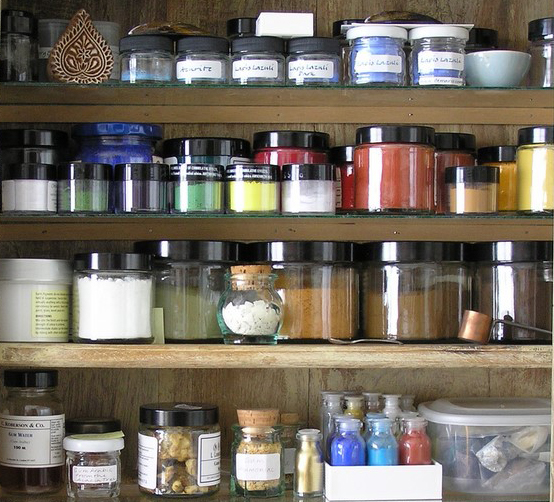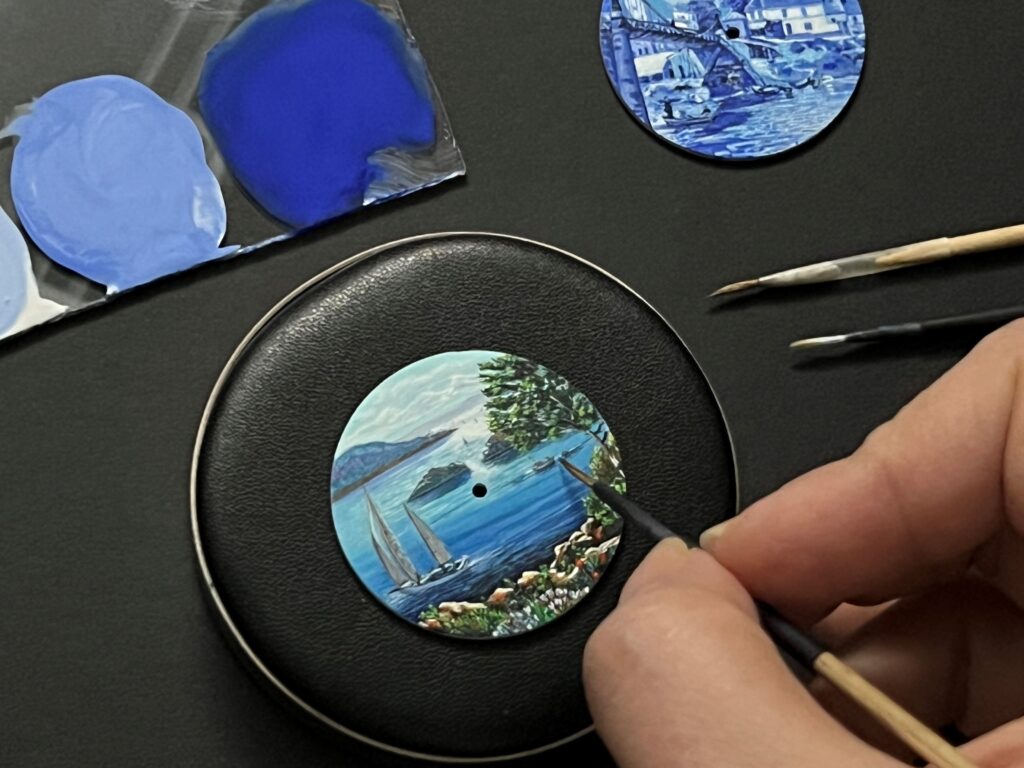It is the dial on the face of a watch that gives it its distinct personality. Regardless of what is going on underneath the case, the dial is the first thing you spot and will be a decisive factor in whether or not you like what you see.
The miniature is the highest and final expression of art and beauty. It is the jewel in the crown of art; a crystallization of all delicacy, rarity and perfection of color and craftsmanship… the miniature is a thing a dream over, to love, and to hold next to the heart. The miniature will live when other pictorial art is forgotten.
William Hingston Baldwin


Miniature art is fine art executed with precision and detail at a very small scale. Miniature fine art is a traditional art form that has been in practice for centuries, so it is important to note that it is not a fad, novelty, or curiosity. It is high quality fine art that has been painstakingly executed through tiny and precisely placed brush, pencil, or engraving strokes with mastery in color, composition, form, and lighting just as in standard size artwork.
This art form is a slow and meticulous process by its very nature. Works cannot be rushed and normally take longer to complete than would the same image in a larger size. The process of creating a miniature art piece is intimate for the artist. Later viewing by a collector is just as intimate. Both have to get up close and personal to the artwork. It’s a jewel that can be held in the palms of your hands. Magnifying glasses are often employed to see all the tiny little details and minuscule brushwork that have been laid down upon the surface of choice.
This unique art form, based on a minute scale, traces its roots back to the book paintings and illuminated manuscripts set in the 7th century. A work of fine art in miniature on watch dial is a particularly personal object that draws the viewer into an intimate, concentrated little world that is breathtaking in its execution. Every single detail is miniaturized — the scale of the subject matter, the brush strokes — so that only with high magnification can one behold the immaculate details of the artist’s technique which may include stippling, hatching, or pointillism. These techniques are a specialized means of producing a perfect balance of color and detail in a series of thinly applied layers of exquisite color intended to reflect light. The miniatures show a high standard of design and the artist’s mastery of the chosen media and palette.
The process starts by first preparing the dial for painting. The face of the dial should be mother of pearl or camel bone. Mother-of-pearl is the iridescent lining found inside a shell. It’s extremely fragile, and prone to chips and cracks and getting the mother-of-pearl out of the shell is a complex process. Once the ideal shells are chosen, they are crushed and then precisely machined into thin disks that are just 0.2mm thick. After the round blank is made, the rest of the process is mostly done by hand. Each disk is carefully inspected before anything else is added. Careful polishing follows and painting, varnishing, or lacquering the back is done to enhance the color and durability of the disk. The disk is later set on the top of a metal dial which has the pins to be set on the movement.



Next in line is to prepare the color, the extra fine handmade colors are produced with care according to the tradition from mineral and natural pigments, from an accurate selection among what the traditions and modern science can offer, and the majority of them are the same pigments used by the masters of the past to create their artworks. In each color the pigment is milled with just the right amount of a mixture of Arabic gum (binder) and vegetable glycerin. These ingredients give the best results regarding ease and pleasantness of painting.
Paint brushes are the most important elements in creating a piece of art in miniature. Miniature painting is known for its precision and highly articulated detail. Such finesse requires a versatile and responsive brush, coupled with intense training in the properties of different types of brush. Brushes are made in varying thicknesses. The painter is very conscious of selecting the proper tool to achieve the effect he/she desires. Miniature painters generally use each brush for only one pigment so as to avoid contamination by pigments which would diminish the brilliance of the finished painting. Persian artists favored brushes are made from the hair of a white cat which is specially bred for supplying hair for brushes. The strands of hair are carefully chosen and gathered together inside a quill from a pigeon’s feather. This quill is trimmed and affixed to a handle of the artist’s choice.


The process of painting starts by first using pencil to draw a rough sketch of the subject and the main process starts by applying the first layer of color on top of the sketch paying close attention to the borders and the edges of the color. Several layers follow coloring process to add different elements of the image and prevent mixture of the colors. Between each layer, the artist sands the dried paint to give a smooth surface to work the next layer. The two final layers are to refine all elements of the painting and add the detail.
The process of doing a miniature takes long time because all the details need a lot of attention and some parts of the painting are done with a brush that has a single hair at the tip.